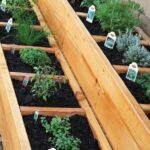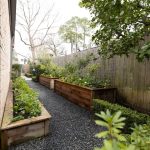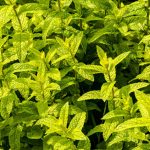Welcome to the world of Bay Area vegetable gardening. The Bay Area’s mild climate and fertile soil make it a prime location for an abundance of fresh, homegrown produce. In order to maximize your success in this endeavor, it is important to understand the unique seasons and climate patterns that influence vegetable cultivation in this region. That’s where a gardening calendar becomes invaluable, serving as a guide to help you plan and execute your garden tasks effectively.
Vegetable gardening has become incredibly popular in the Bay Area, with more and more individuals embracing the joys and rewards of growing their own food. This trend can be attributed to several factors, including a desire for sustainable living, increased awareness about the benefits of organic produce, and a general love for connecting with nature.
By cultivating your own vegetables, you not only have access to fresh, nutritious food but also gain a sense of satisfaction from nurturing plants from seed to table.
To ensure success in your vegetable garden, it is essential to understand the climate of the Bay Area. This region is known for its microclimates – localized areas with distinct weather patterns influenced by factors such as altitude, proximity to coastlines or mountains, and prevailing winds.
These microclimates result in variations in temperature, rainfall, and exposure to sun or shade within relatively small geographical areas. As a gardener, it is important to know how these microclimates affect your specific location and adjust planting strategies accordingly.
In this comprehensive article series on Bay Area vegetable gardening, we will delve into each season – spring, summer, fall, and winter – providing you with practical tips and guidance tailored specifically for this region. From preparing your garden bed for spring plantings to protecting tender crops from occasional frost during winter months, we will cover it all. So grab your gardening gloves and get ready to explore the seasons of Bay Area vegetable gardening.
Understanding the Climate of the Bay Area
The Bay Area is known for its unique weather patterns and microclimates that can greatly impact vegetable gardening. Understanding the climate in this region is crucial for successful cultivation.
The Bay Area experiences a Mediterranean climate, characterized by mild, wet winters and dry summers. However, microclimates within the region can vary significantly due to the varying geography and proximity to the ocean or mountains. Coastal areas tend to have cooler summers and milder winters, while inland areas experience hotter summers and colder winters.
These diverse microclimates offer both challenges and opportunities for vegetable gardeners. It’s important to choose plant varieties that are suited to the specific climate of your location within the Bay Area. For example, if you live in a foggy coastal area, choose vegetables that tolerate cool temperatures and mildew resistance.
In addition to varying climates, the Bay Area also faces other challenges such as periodic droughts and occasional heatwaves. Adequate irrigation practices are essential during dry periods, especially in areas with poor soil drainage. Mulching techniques can also help retain moisture in the soil.
Understanding the climate of the Bay Area allows gardeners to make informed decisions about which vegetables to grow and when to plant them. By taking advantage of the unique conditions offered by different microclimates, gardeners can maximize their chances of success and cultivate a thriving vegetable garden year-round.
| Climate Characteristics | Considerations for Vegetable Gardening |
|---|---|
| Mediterranean climate – mild, wet winters; dry summers | Choose plant varieties appropriate for each season; water management during dry spells |
| Varying microclimates (coastal vs inland) | Select plants that thrive in your specific microclimate; consider temperature, humidity, and wind exposure |
| Potential droughts and heatwaves | Implement proper irrigation techniques and mulching; choose heat-tolerant varieties |
Spring
Spring is a time of renewal and growth in the Bay Area, making it an ideal season for vegetable gardening. As the days get longer and temperatures start to rise, gardeners can prepare their plots for a productive growing season ahead. This section will outline the tasks and considerations for gardeners in the Bay Area during spring, with a focus on choosing the right vegetables, soil preparation, fertilization, and pest control.
One key task during spring is to prepare the soil for planting. If your soil has become compacted over winter, it’s essential to loosen it up before sowing seeds or transplanting seedlings. This can be done by tilling the soil or using a garden fork to break up any clumps. It’s also important to enrich the soil with compost or well-rotted manure to provide essential nutrients for your crops.
When selecting vegetables to grow in spring, consider those that prefer cooler temperatures and have shorter maturation times. Leafy greens like lettuce, spinach, and kale are excellent choices as they thrive in mild weather conditions. Other suitable options include peas, radishes, carrots, and beets. It’s important to check the specific planting requirements of each vegetable to ensure success.
Another crucial aspect of successful gardening in spring is pest control. With warmer weather comes an increase in pests such as aphids and slugs. Implementing preventive measures such as installing row covers or applying organic pest repellents can help protect your plants from damage. Regularly inspecting your garden for signs of pests or diseases will allow you to address any issues before they worsen.
| Tasks | Considerations |
|---|---|
| Loosen and enrich the soil | Till or fork the soil, add compost or manure |
| Select suitable vegetables | Choose cool-season crops with shorter maturation times |
| Implement pest control measures | Install row covers, use organic pest repellents, regularly inspect for pests or diseases |
As you embark on your spring vegetable gardening journey in the Bay Area, remember to enjoy the process and embrace the potential of a successful growing season. With careful planning and proper care, you’ll soon be savoring the fresh flavors of homegrown produce from your very own garden.
Summer
The summer months in the Bay Area can bring intense heat and challenging growing conditions for vegetable gardeners. However, with the right strategies and precautions, you can still maximize your yields and keep your garden thriving. Here are some key steps to help you navigate through the hot Bay Area summer:
- Choose Heat-Tolerant Vegetables: When planning your summer garden, it’s important to select vegetables that can withstand high temperatures. Some popular options include tomatoes, peppers, eggplant, cucumbers, summer squash, and beans. These varieties are known for their ability to thrive in warm weather.
- Irrigation Practices: Adequate watering is crucial during the summer months. The Bay Area typically experiences dry summers, making it necessary to provide consistent moisture to your plants. Consider using drip irrigation systems or soaker hoses to deliver water directly to the root zone and minimize evaporation.
- Shade Management: As temperatures rise, providing shade for your plants becomes essential. Erecting shade cloth or using tall plants as natural shading can protect delicate vegetables from excessive sun exposure and heat stress.
- Pest Control: Summer brings an increase in pests such as aphids, whiteflies, and mites. Regular monitoring of your garden is crucial to catch infestations early on. Implement organic pest control methods like companion planting or introducing beneficial insects to keep pest populations under control.
By following these tips and strategies, you can ensure a productive and thriving vegetable garden throughout the summer months in the Bay Area.
Fall
As the temperatures start to cool down in the Bay Area, fall marks a shift in the gardening season. It’s time to reap the rewards of your hard work throughout the year and prepare your garden for the upcoming winter.
In this section, we will discuss the cooler temperatures and changing conditions faced by gardeners in the Bay Area during fall, highlight vegetables suitable for fall planting, and offer tips on harvesting, preserving, and storing produce for the coming winter months.
Fall is a great time to enjoy a bountiful harvest from your vegetable garden. Many crops thrive in the cooler temperatures and shorter days of fall, allowing you to continue enjoying fresh produce for weeks or even months after summer has ended.
Some popular fall vegetables that are suited for planting in the Bay Area include broccoli, Brussels sprouts, carrots, radishes, spinach, and kale. These cold-tolerant vegetables can withstand light frosts and often develop sweeter flavors as they mature during cooler weather.
When it comes to harvesting your fall crops, timing is key. Different vegetables have different maturity times, so be sure to check seed packets or plant tags for recommendations on when to harvest each variety. Generally, you want to harvest when vegetables are at their peak ripeness but before severe weather sets in. To extend your harvest window, consider staggered plantings or successional sowings throughout summer and early fall.
To make the most of your harvest and help preserve its freshness through winter, proper storage techniques are crucial. Root vegetables like carrots and beets can be stored unharmed in moist sand or sawdust in a cool basement or refrigerator.
Leafy greens such as spinach or lettuce should be refrigerated immediately after harvesting to retain their crispness. If you have an abundance of produce that isn’t suited for long-term storage but you don’t want it to go to waste, consider donating it to local food banks or sharing with friends and neighbors.
By carefully planning your fall garden and following the recommended practices for harvesting and storage, you can ensure a satisfying end to the growing season while laying the groundwork for a successful winter garden. In the next section, we will explore how to prepare your garden for a restful season during winter.
Winter
Explaining Winter Conditions in the Bay Area
During winter, the Bay Area experiences milder temperatures compared to other regions, but occasional frost can still occur. Understanding the climate during this season is important for successful vegetable gardening. The average low temperatures range from 40°F to 50°F (4°C to 10°C), with occasional drops below freezing. Knowing these conditions can help gardeners plan and make appropriate preparations for their winter gardens.
Benefits of Winter Gardening
While many may think of winter as a time for rest, it can actually be an opportunity for productive gardening in the Bay Area. Winter gardening provides several benefits to both gardeners and the health of the soil. By planting during this season, you can make use of empty garden beds, increase organic matter in the soil, and improve nutrient availability for spring planting.
Additionally, growing vegetables during winter allows you to enjoy fresh produce even when traditional gardening seasons may be dormant. This can be especially rewarding as you have a chance to harvest throughout the year and experiment with different crops that thrive in cooler temperatures.
Vegetables Suitable for Winter Planting
Several vegetables are well-suited for planting in the Bay Area’s mild winters. These include leafy greens like lettuce, spinach, and kale, which can tolerate colder temperatures and continue growing even with reduced daylight hours. Other popular options are root vegetables like carrots, beets, turnips, and radishes that benefit from cooler weather as it enhances their flavor.
When planning your winter garden, pay attention to specific planting methods recommended for each vegetable. Some may require direct sowing into the ground while others do better if started indoors or transplanted from seedlings.
Winter-Specific Tasks
Preparing your garden for winter involves various tasks to protect plants from frost damage and ready the soil for future seasons. One essential task is soil amendment, which involves incorporating organic matter like compost or well-rotted manure to improve soil structure and fertility. This will benefit your crops in the upcoming growing season.
Cover cropping is another valuable technique for winter gardening in the Bay Area. Sow a cover crop such as winter rye, clover, or fava beans to prevent soil erosion, improve soil health, and act as a living mulch during the colder months.
To protect plants from frost, consider using protective structures like row covers or cold frames. These structures can help trap heat and create a microclimate around delicate plants. Additionally, regular monitoring of weather forecasts can allow you to take preemptive measures when there is an imminent threat of frost.
By following these guidelines and making necessary preparations, you can ensure a restful yet fruitful winter season for your garden in the Bay Area.
Year-Round Gardening Opportunities in the Bay Area
The Bay Area’s mild and moderate climate provides gardeners with a unique opportunity to grow vegetables year-round. While many regions experience harsh winters or scorching summers that limit their gardening seasons, the Bay Area offers the perfect conditions for extended cultivation. Whether you are a seasoned gardener or just starting out, taking advantage of year-round gardening can ensure a steady supply of fresh, homegrown produce throughout the seasons.
Advantages of Succession Planting
One of the key strategies for year-round gardening in the Bay Area is succession planting. Succession planting involves staggered plantings of crops at appropriate intervals to ensure a continuous harvest. By sowing seeds or transplanting seedlings in succession, you can maximize your garden’s productivity and extend your growing season.
For example, as you harvest cool-season crops like lettuce and spinach in early spring, you can immediately replant those areas with warm-season vegetables like tomatoes or peppers. This allows you to take full advantage of the changing seasons and optimize your garden space.
Utilizing Protected Structures
Another way to maximize year-round growing opportunities in the Bay Area is by utilizing protected structures such as greenhouses or cold frames. These structures provide an additional layer of insulation and protection from extreme temperatures, allowing you to grow more tender plants during colder months.
A greenhouse creates a controlled environment where you can start seeds earlier in the year and provide warmth for heat-loving vegetables even during cooler months. Cold frames, on the other hand, offer a simple solution for protecting plants from frost while still taking advantage of natural sunlight.
By incorporating these protected structures into your gardening practices, you can not only extend your growing season but also expand your repertoire to include more delicate crops that may not thrive under normal outdoor conditions.
Recommended Crops for Year-Round Gardening
When it comes to year-round gardening in the Bay Area, there are several crops that thrive in the region’s mild climate. Some recommended crops for year-round cultivation include:
– Leafy greens such as lettuce, kale, and chard: These cool-season vegetables can be harvested continuously with proper succession planting.
– Root vegetables like carrots, radishes, and beets: These crops can be sown throughout the year for a continuous harvest.
– Herbs like parsley, cilantro, and dill: Many herbs are well-suited to year-round growing in the Bay Area, providing fresh flavor and aroma all year long.
– Brassicas including broccoli, cauliflower, and Brussels sprouts: These cool-season crops do well in the mild temperatures of the Bay Area and can be planted in both spring and fall.
By focusing on these recommended crops and implementing succession planting techniques using protected structures when necessary, you can ensure a productive vegetable garden throughout the year in the Bay Area.
Conclusion
In conclusion, Bay Area vegetable gardening offers a bountiful and rewarding experience for individuals who are passionate about growing their own food. By following a gardening calendar that takes into account the unique climate and seasons of the region, gardeners can maximize their yields and enjoy a productive growing season year-round.
The Bay Area’s diverse microclimates and weather patterns present both challenges and opportunities for vegetable gardening. Understanding these factors is crucial in planning and preparing for successful cultivation. From the mild winters to the hot summers, each season requires specific attention and care to ensure healthy plant growth.
By following the tips and recommendations provided in this article, gardeners in the Bay Area can make the most of each season. From soil preparation to pest control, from shade management to irrigation practices, each step plays a vital role in achieving fruitful results. Additionally, embracing year-round gardening opportunities allows for continuous harvests and provides a sense of connection with nature throughout the seasons.
To further assist in your vegetable gardening journey, there are various resources available such as local gardening clubs or informative websites that provide valuable advice and support. Remember, every gardener’s journey is unique, so feel free to explore and experiment with different vegetables, techniques, and strategies that work best for you. So why wait? Embrace the bounty of Bay Area vegetable gardening today and enjoy the satisfaction of growing your own nutritious food right in your backyard.

If you’re looking to get into vegetable gardening, or are just looking for some tips on how to make your current garden better, then you’ve come to the right place! My name is Ethel and I have been gardening for years. In this blog, I’m going to share with you some of my best tips on how to create a successful vegetable garden.





